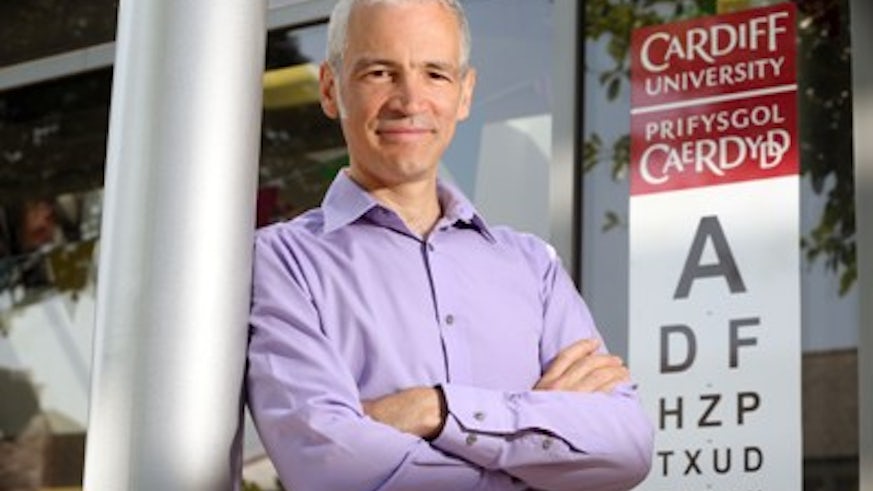Detecting sight loss
17 July 2013

A team of University scientists have teamed-up with leading space engineers to create an instrument which could help detect the developed world's most common form of sight loss.
Age-Related Macular Degeneration (AMD) leads to loss of vision when looking at something directly ahead, at another person, or when reading or watching television.
In a bid to pick-up the earliest stages of AMD, scientists from the School of Optometry and Vision Sciences have joined forces with engineers at the UK Astronomy Technology Centre (UK ATC), part of the Science and Technology Facilities Council (STFC) to develop an instrument called a Retinal Densitometer.
"AMD affects a small part of the retina at the back of the eye, the macula, which is used to see detail and colour. One of the earliest signs of AMD is a change in the way that the light sensitive pigments in the macula regenerate after exposure to light," according to Dr Tom Margrain, School of Optometry and Vision Sciences, who leads the research alongside Dr Alison Binns.
"Working alongside engineers - more used to designing state of the art instruments for ground and space technology - we've been able to develop the Densitometer, which can assess this change by measuring, over time, the very small changes in the amount of light reflected by the retina after exposure to light," he adds.
The Retinal Densitometer works by measuring the way the eye "dark adapts" after exposure to a bright light. It has several distinct advantages when compared to existing detection techniques in terms of its sensitivity and ability to measure responses to light from different parts of the retina. It is also completely non-invasive unlike some techniques.
Early diagnosis is the one of the most crucial factors for developing new treatments and improving the management of this disease, but it is extremely hard to detect in the early stages and current tests are limited.
Previous attempts at early detection techniques have been limited by the performance of the technology used to make the measurements.
Early tests already carried out by the project team on ten patients with early stage AMD and 10 controls, have shown that the light changes on the macula can be highly accurately measured using this patented technology, and that it has a high ability to distinguish between affected and non-affected groups.
Dr Margrain adds: "The benefits to patients are potentially huge, but the benefit is not just societal, it is also economic. We may be living longer but this in turn increases the pressure on healthcare services.
"Our next steps will now be to get the densitometer ready for official clinical testing and then to take this through to full commercialisation.
"Ultimately our densitometer could be used in any optician's clinic."
The project has been funded by the National Institute for Health Research's Invention for Innovation (i4i) programme and also by STFC, through its Commercial Proof of Concept Fund and Futures Programme, which was responsible for initially identifying the need for, and setting up, the collaboration between Cardiff University and STFC.
Dr Dave Melotte, Innovation Manager at the UK ATC said: "This is a fantastic example of how fundamental science, technology and engineering can have a huge positive effect on society when working in collaboration with academia and experts in the relevant fields.
"Astronomy technology and vision science might seem poles apart but put the right experts together and they are able to achieve things that would be impossible by either group in isolation."
Minister for Universities and Science David Willetts said: "Space technology doesn't just tell us more about the universe – it also has applications right here on earth.
"This project is very promising for patients and shows that by working across disciplines scientists and engineers can develop innovative new solutions for a whole range of issues, including healthcare."